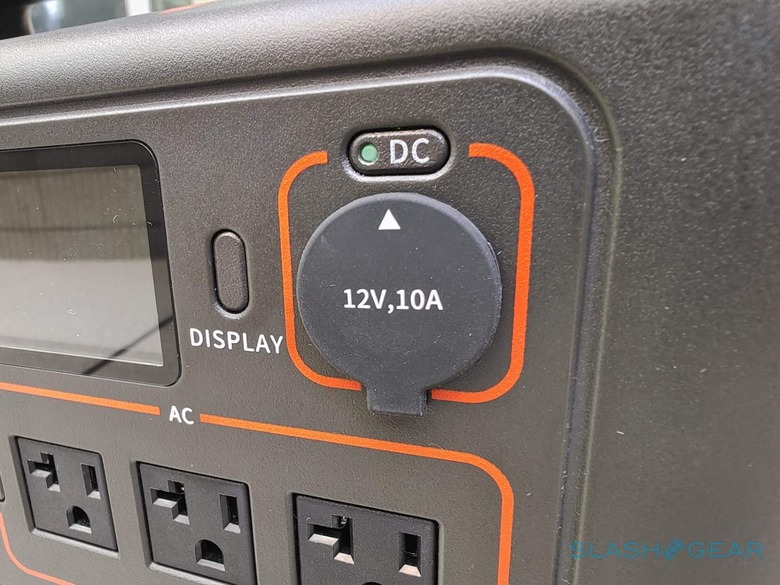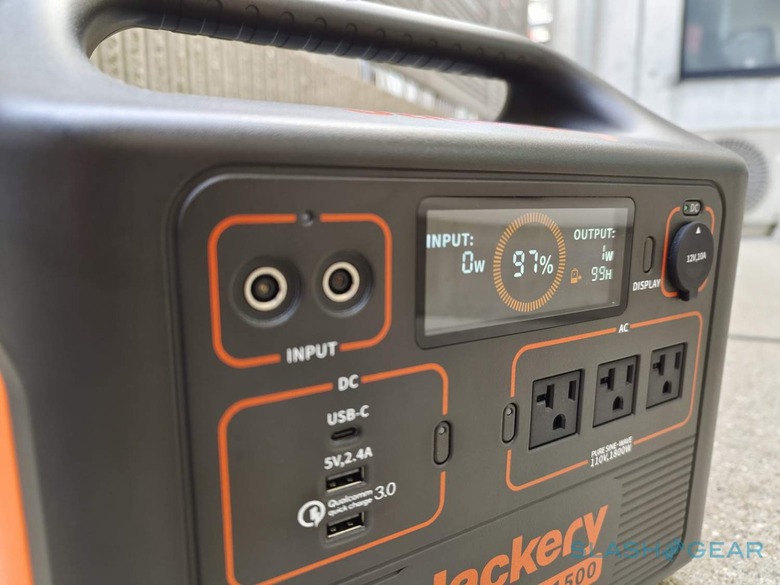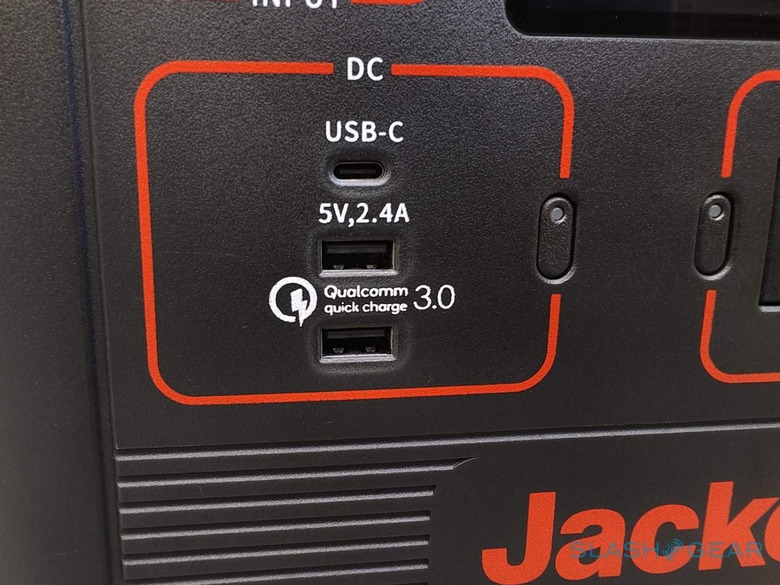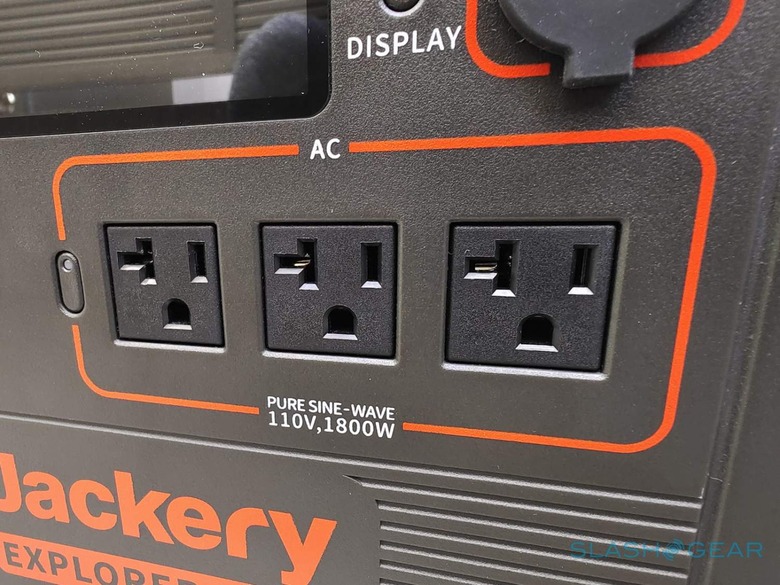Jackery Explorer 1500 Portable Power Station Review
- New color LCD screen with more information
- Improved solar charging efficiency
- Massive battery and plenty of output options
- 60W USB-C port good for laptops
- Two input ports for faster charging
- Not so portable due to weight and size
- Single USB-C port
California-based Jackery has been in the portable generator business for almost a decade now but recent events have shown how alternatives to gasoline-powered generators are even more important these days. Safety, environment friendliness, and flexibility have become just as critical as having a power source while off the grid or, more importantly, in an emergency. At its annual Jackery Day, the company announced two new such solutions and we take the Jackery Explorer 1500 for a spin to see how much it has improved since we met the Jackery Explorer 1000 last year.
What's in a Name
Jackery has admittedly embraced a rather confusing naming system but it's actually easy to understand once you get the hang of it. Technically speaking, it just launched the Jackery Solar Generator 1500 and its larger sibling, the Jackery Solar Generator 2000, which actually refers to a bundle that has both the matching portable power stations and four SolarSaga solar charging panels. You can, however, buy just the portable power stations, which come under the Jackery Explorer 1500 and Explorer 2000 names, separately as well as the appropriate 100W or 200W Solar Saga panels, respectively.

To be clear, you don't need the SolarSaga 100W panels to charge the Jackery Explorer 1500. The portable power station, just like the rest of its kin, supports three charging options. As we'll see, however, Jackery is really pushing the solar charging option since it is an important part of its "clean, quiet, and easy to use" narrative.
Design
Anyone who has seen a Jackery portable power station has probably seen them all, at least in terms of design. The Explorer 1500 is a dead knocker for its Explorer 1000 predecessor, at least the US version, just with its ports rearranged. That means that all the ports, both input and output, are located on the front, making it easy to access them in a flash. It also means that the portable power station still has that torchlight to the side for emergencies.

The biggest change in the Jackery Explorer 1500, at least as far as design goes, is the larger, more colorful, and more informative LCD screen. More than just a pretty face, the screen is able to show more information, including that all-important estimates for charging and discharging times. Those aren't always precise, of course, but it at least lets you know what to expect rather than catching you off guard with an empty emergency battery. Fortunately, the more sophisticated display still sips
With a 1488Wh battery, the Explorer 1500 is naturally larger and bulkier. The carrying handle built into the body still makes for a solid hold but the 33.1 lb (15kg) weight doesn't exactly make it comfortable. This is definitely one portable battery you'd prefer to stay in an accessible corner of your house or in the car, moving it only to actually place it there.
Input
Beyond just rearranging the ports and the new LCD screen, the biggest external difference in this year's Jackery portable power stations are the input ports. Whereas the Explorer 1000 had one 12V port and an Anderson Power Pole connector, the new Explorer 1500 ditches the latter and doubles the former, with the DC input ports now capable of receiving 48V of power from a larger adapter. What this means, in theory, is that the Explorer 1500 can charge twice as fast.

In practice, the 1.5 kWh battery almost evens out that advantage, though the new portable power station still races ahead. With only one AC adapter, it can charge up to 80% in about 4 hours, 100% in 6 hours. With two adapters, that 80% only takes 2 hours and 3.5 hours will charge it to full. Of course, Jackery prefers that people go the solar charging route which, while slower, is also greener.
That is, of course, part of the company's spiel on why you'd want to invest in such a portable power station instead of a regular fuel generator. Aside from the ease of use, silence, and safety, Jackery's products also offer more environment-friendly options but only if you ditch the wall socket or car charger anyway. You can buy the SolarSaga 100W panels separately but you'll want to buy them in 2s or 4s to truly take advantage of the more efficient "SolarPeak" charging that the company boasts of.
Output
Having a larger battery is going to be pointless if the Jackery Explorer 1500 couldn't deliver all that power to the right devices and appliances. Fortunately, it offers the same number and kinds of ports as the smaller Explorer 1000 with some upgrades. Unfortunately, it offers the exact number and kinds of ports as the Explorer 1000, nothing more, nothing less, despite that larger size.

That said, the upgrades that Jackery did put into some of those ports are actually very significant. The USB-C port finally supports 60W Power Delivery, which at least makes it possible to use that for charging some more power-hungry devices, like MacBooks. However, in an age where the number of USB-C devices is rising higher, we wished it offered more USB-C ports. Instead, the Explorer 1500 still has one USB-A port with a standard 5V/2.4A output and one that at least supports Qualcomm Quick Charge 3.0.
One could always argue that you could just use the three AC outlets for everything else. While true, the conversion from DC to AC does incur some inefficiency and is probably best reserved for appliances that do need it. As for those AC outlets, they have also been "upgraded" to use 20-amp receptacles to support some industrial appliances.
While the Jackery Explorer 1500's massive battery and plethora of ports look impressive, it still bears noting that its battery life depends on what you plug into it. While you'll be able to charge smartphones and tablets dozens of times over, a 100W microwave will empty the power station in a little over an hour of continuous use, which isn't advisable anyway. It's definitely one of the drawbacks of such battery-powered generators but the conveniences and safety they offer in exchange may be well worth the cost in some cases.

Wrap-up
Easy, safe, quiet, and, most importantly, clean. Those are the traits that Jackery is trying to push into consumers' minds with the launch of the new Jackery Explorer 1500 and its solar generator bundle. Definitely a noteworthy upgrade compared to last year's Jackery Explorer 1000, the new portable power station offers better power efficiency and a more informative display but at the cost of bulk and heft.
The Jackery Explorer 1500 Portable Power Station will be available for purchase starting April 5 at 10 am PDT on Jackery.com and Amazon for $1,599. If you really want to go all-in, the Jackery Solar Generator 1500, which comes with four SolarSaga 100W panels, will also be on sale starting that date for $2,699.
